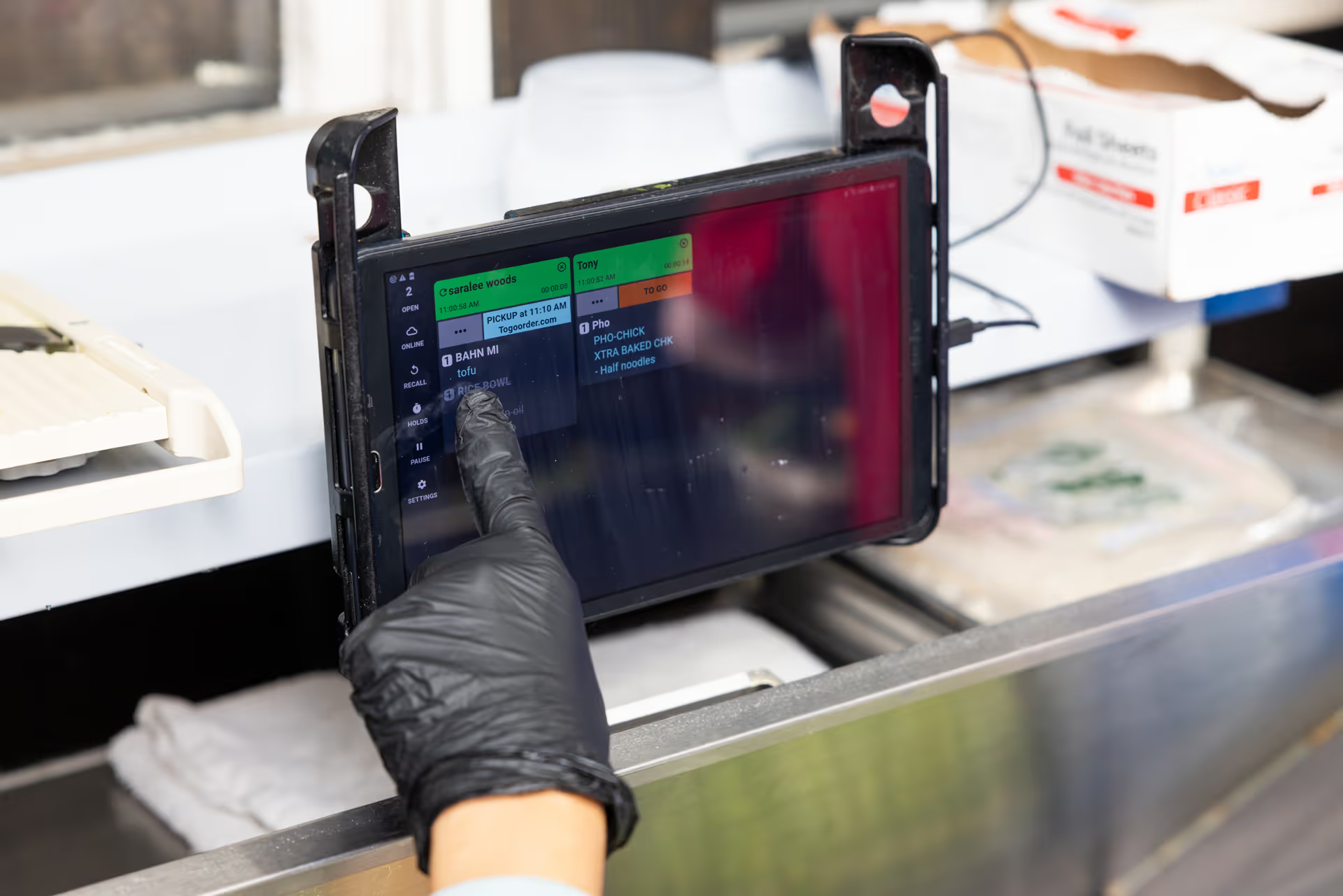Is your kitchen display system (KDS) providing all the features your business needs to complete orders accurately and efficiently? This blog answers some frequently asked questions about Fresh KDS system features, and highlights what makes our system a perfect fit for your kitchen.
What Is the Purpose of a Kitchen Display System?
A kitchen display system (KDS) is a tech tool that enables restaurants to manage orders more efficiently. KDS systems display orders on one or more screens that are placed in the kitchen or food prep area, allowing cooks and other staff to see real-time updates on what needs to be prepared. The purpose of a KDS is to:
- Clarify order priorities
- Highlight order details
- Showcase order timers
- Track kitchen efficiency
Additionally, Fresh KDS provides features that allow you to communicate order status with your customers, effectively manage orders across multiple screens, and customize timing, color, and sound alerts for different order types.

How Does a Kitchen Display System Work?
A KDS works by receiving order data from the point-of-sale (POS) or online ordering platform. Online orders can either be routed directly to the kitchen screens or funneled through the POS.
How the KDS gets the order data depends on the provider, but there are two common methods. The first is through an API (or cloud), which requires the restaurant to have internet for the KDS to work. The second is using the local network to connect to the POS in place of a printer. This method allows the KDS to receive orders even if the internet goes out.
Once orders are displayed on the KDS screens, employees can interact with them: changing the ticket position based on what's due next, placing future orders on hold until later, and marking which items have been prepared.
When the entire order is ready, the kitchen clears (or "bumps") the order card from the screen. This action stores data about the ticket, including how long it was open, for reporting purposes. With Fresh KDS, you can track each order type so you can get a clearer picture of wait times for each and every customer experience (like online orders may be timed to go out slower than dine-in orders).
What Is the Difference Between a First-Party and a Third-Party KDS?
- A first-party KDS is built by the point-of-sale provider. It will only work with that POS. An example of a first-party KDS is Square KDS.
- A third-party KDS integrates with multiple different POS systems. Fresh KDS is a third-party kitchen display system that works seamlessly with leading POS systems, like Square and Clover.
Typically, a third-party KDS has more features and functionality since kitchen display systems are the company's sole focus. With a third-party KDS, you can switch POS systems in the future and still keep your KDS.
Which Ordering Systems Does Fresh KDS Integrate With?
Kitchen display systems must get the order data from somewhere — either the POS at the register or an online ordering source. To do this, the KDS must have an integration with the ordering system. When selecting a KDS, you need to choose one that has an integration with your chosen POS.
Fresh KDS integrates with many leading POS solutions, online ordering platforms, and order aggregators, including Square, Lightspeed, Arryved, Cuboh, Olo, and more. See all current integrations for Fresh KDS.
Can I Change the Display Layout?
Fresh KDS offers a customizable screen layout with options for tiled, classic, split, or takeout view screen display modes. Each display mode is also available in a Light, Dark, or System Settings mode.
- Tiled View: Displays the most tickets on a screen with orders shown top to bottom, left to right.
- Classic View: Offers a simple, clean display with orders shown left to right in one horizontal row.
- Split View: Organizes your view by order type with orders shown left to right in two separate horizontal rows.
Take Out - Enables efficient order management by solely displaying take-out orders.

Can I Send Orders From One Screen to Another?
With the Fresh KDS Premium or Unlimited Tier, you can choose cross-screen communication settings to simultaneously clear orders or send orders to additional screens.
- Multi Clear: When an order (or individual item) is cleared from this screen, it will be cleared on all KDS screens of your choosing.
- Prep-Expo: When an order on a prep station is cleared from the screen all the items from that station will get a strikethrough on the expo screen without clearing the order.
- Send To Next Screen: When an order is cleared from this screen, it will appear on the next KDS screen of your choosing. some text
- To set up multiple screens, you will want to set your POS to only send orders to the starting KDS screen to prevent duplicate orders. Fresh KDS will then send the order to other screens based on your setup.
How Will a KDS Help My Business?
A KDS can help you improve your speed of service, prepare orders more accurately and efficiently, and reduce waste (both paper waste and food waste). With the right tool, you can increase customer satisfaction while also reducing business costs.
Fresh KDS stands out by providing an intuitive and flexible platform that seamlessly integrates with your existing systems. Its real-time order tracking ensures that your kitchen staff is always in sync, reducing miscommunication and errors. This enhanced coordination not only speeds up the preparation process but also ensures that orders are completed accurately.
Robust features — like custom order alerts, color-coded order types, and the ability to pause stations — give your team the tools they need to manage high volumes efficiently. By streamlining operations, Fresh KDS boosts customer satisfaction while empowering your staff to work more effectively. This results in a smoother workflow, higher productivity, and a more profitable business.




.png)




.webp)


